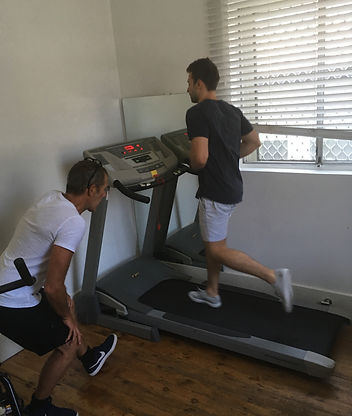
Why Clovelly Road Physiotherapy?
As physiotherapists, we’ve got a really good understanding of ideal running biomechanics, particularly in relation to injury prevention and management. We’re good at spotting biomechanical faults and prescribing relevant exercises that aim to counteract these faults. We’re also passionate about running, so our goal is to keep you running and if you’re injured, get you back to running as soon as possible!
Running Assessment
Why would I get a running assessment?
There are many benefits to putting on your running shoes and pounding the pavement for a while; improved cardiovascular fitness, enhanced lower limb strength and endurance, stress and anxiety management and many others. Unfortunately, running injuries are common and can stop the passionate runner from being able to get their daily endorphin fix. Therefore, injury prevention and injury management are good reasons to consider a running assessment. Increased running performance and efficiency are often an extra bonus!
What happens in a running assessment?
The assessment goes for an hour and includes video analysis of your running by a physiotherapist. The video is taken from multiple angles (front, behind and side) in order to evaluate your running biomechanics and identify particular faults which may contribute towards the onset of injury.
Your physiotherapist will review your running video with you frame by frame so that you may see the way that you move when you run and also help identify any poor technique patterns or poor alignment. A thorough explanation will be provided about why or how these factors might contribute towards injury. Other functional movements are also assessed to provide a complete picture of your running related strength and control.
Most importantly, the next step is for your physiotherapist to give you ways of starting to resolve any of the issues identified. This will be done through the prescription of a personalised exercise program and technique tips.
Muscular Imbalances
These days, most of us spend a lot of our time in sitting, whether it’s at a desk, in the driver’s seat, on public transport, in front of the television or even on a bike. Long story short, everything we do is in front of us and so we tend towards flexion based postures and movements which contribute to muscle imbalances such as middle back stiffness, tightness through the chest and hip muscles and lengthening and weakness of the gluteal muscles, all of which are unfavourable for running.
Running requires good mobility through the middle back and chest to permit adequate arm swing, upper body rotation and chest expansion for deep breathing. Good flexibility through the front of the hips and hamstrings are required for good stride length. Lower limb strength and core stability are required for good landing control and push off.
